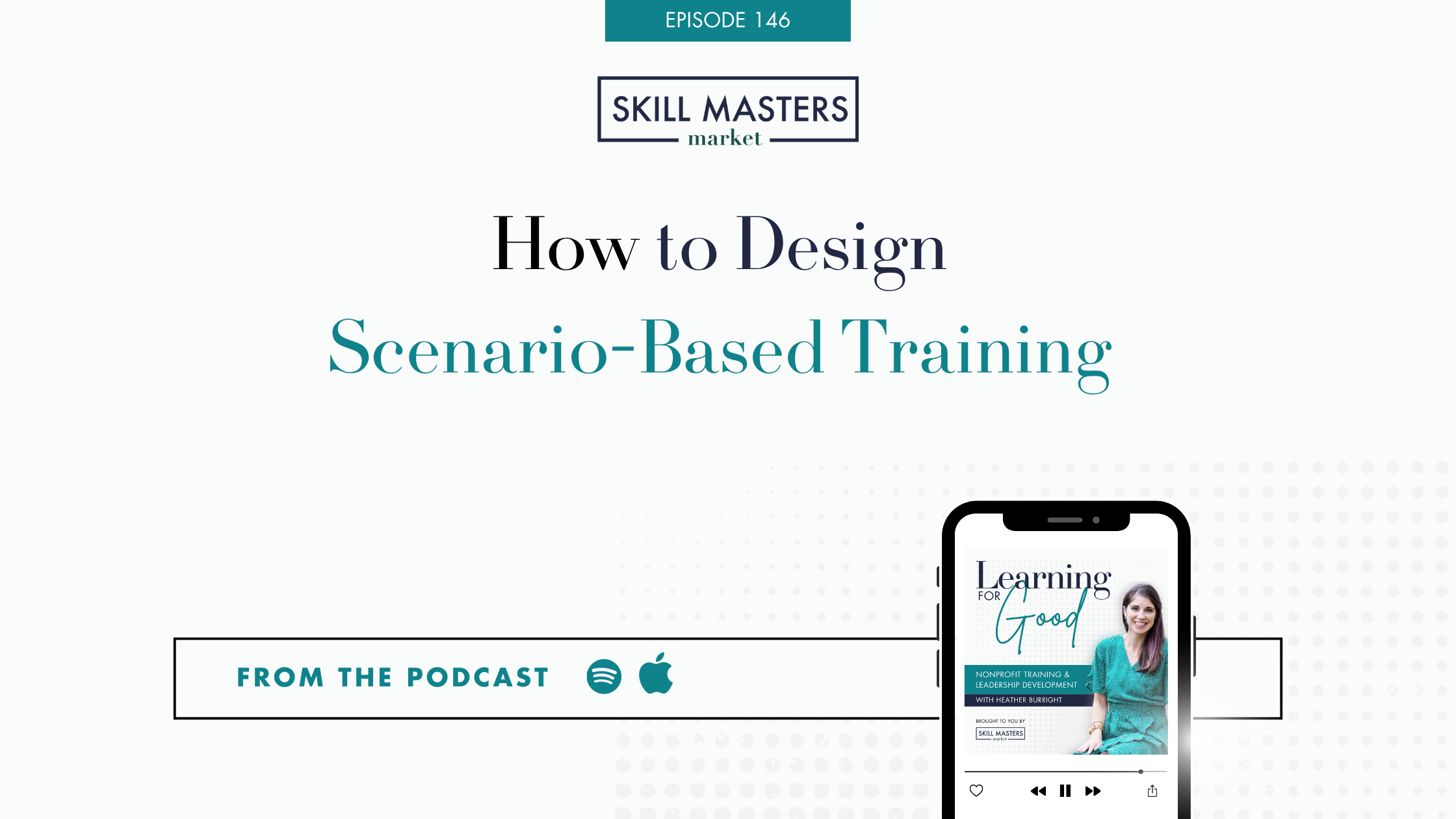How to Design Scenario-Based Training
Get ready to change the way you think about designing training scenarios in this episode of Learning for Good. I have used scenarios myself, and I think this is a skillset that we all need to get better at because scenarios are such a helpful tool in learning. That's why today I'm talking to Srividya Kumar, a learning design leader and co-founder of Learnnovators.
She makes designing scenarios approachable and shares what we need to know to create training scenarios that truly engage and allow the learner to navigate the situation and learn from their own decisions and judgments.
Whether you're just starting out with scenario design or you have some experience under your belt, this episode will give you the tools you need to up your scenario-based training game.
▶️ Key Points:
03:07 Srividya's career in L&D and her passion for learning design
05:59 Defining what a training scenario is
07:45 When scenarios are helpful and when they're not
11:01 How to create scenarios that are realistic and relevant
18:12 Four things to avoid when creating scenarios
20:36 What brings scenarios to life and what gets in the way
25:42 Expert advice for those starting out with scenario design
Why Scenario-Based Training Works in Nonprofits
In the ever-evolving, impact-driven world of nonprofits, there’s rarely room for trial and error. Yet, that’s exactly what people need to grow. They need space to make decisions, see the impact, and learn from it.
That’s where scenario-based learning comes in.
In episode 146 of Learning for Good, Srividya (Vidya) Kumar shares that scenarios give people that safe space.
Scenarios can transform training from something people attend into something they actually use.
How to Design Scenario-Based Training
Start with the decision.
Vidya’s first piece of advice was simple but powerful:
“Start with the decision you want the learner to make, then build the scenario around that.”
Too often, we design training around information. But scenarios flip the script focusing first on the decisions staff need to make in real life, under real pressure.
Add context that reflects the messy middle.
Nonprofit work isn’t black-and-white. From allocating limited resources to balancing stakeholder needs, most decisions fall into the messy middle where every choice has trade-offs. Scenarios give staff a safe space to practice navigating those tensions before they play out in the real world.
Keep it real and avoid the fluff.
Effective scenarios don’t need elaborate backstories or fancy tech. They need authenticity.
Talk to your audience. Understand their pressures, context, and constraints. Then write scenarios that sound and feel like their work.
Need help understanding your audience? Purchase this on-demand workshop and learn how to apply a behavior-based framework to your needs analysis.
Test the scenario with your audience.
If they say, “That’s not how it works,” revise until it is.
Incorporate consequences.
This is their safe space for trial and error. Use realistic consequences so they can see what happens as they make decisions in the scenario.
How Nonprofits Benefit from Scenario-Based Training
When your people can practice good judgment in a safe environment, they’ll make stronger, faster decisions when it counts.
To learn more about designing scenario-based training, tune into episode 146 of the Learning for Good podcast.
Additional Resources Just for You
Other Helpful Podcast Episodes:
Subscribe to the Nonprofit L&D Insiders.
Join the Nonprofit L&D Collective.
Support the Learning for Good Podcast
Become a sponsor.
We are a top 2.5% globally ranked podcast and on the list of top 100 nonprofit podcasts in 2025.
We are currently accepting sponsors. We’ll work together to create a sponsorship package that works for everyone.
Book a call to discuss your unique needs.
Ask a question or suggest a topic.
We love hearing from listeners!
Leave a review.
Reviews teach us what content resonates most and help us reach more people!

